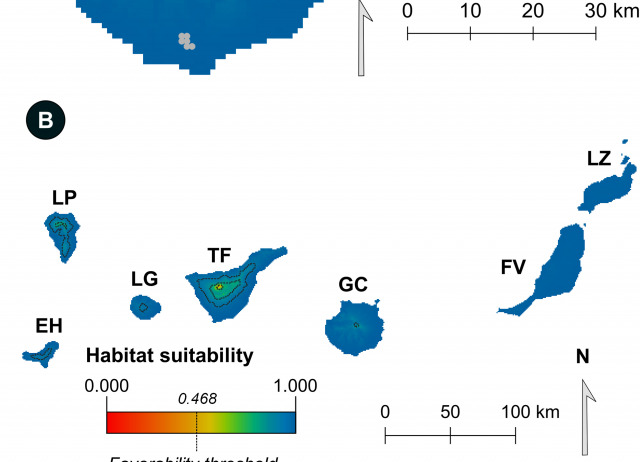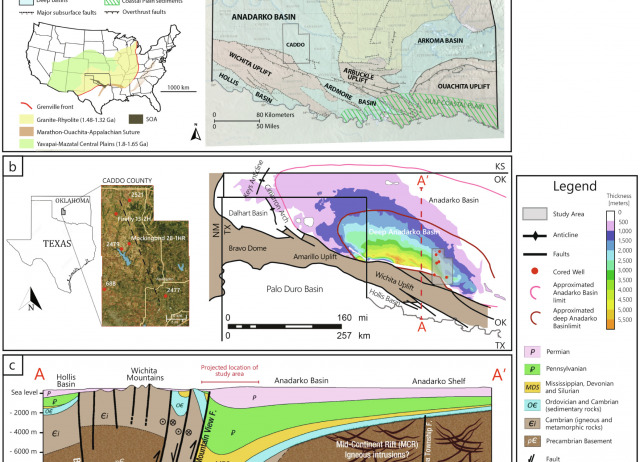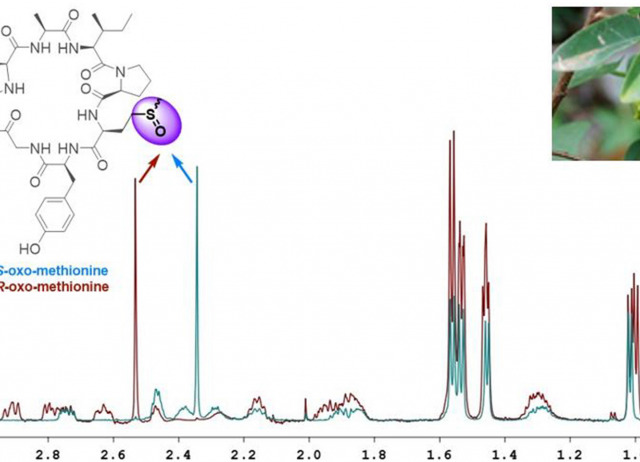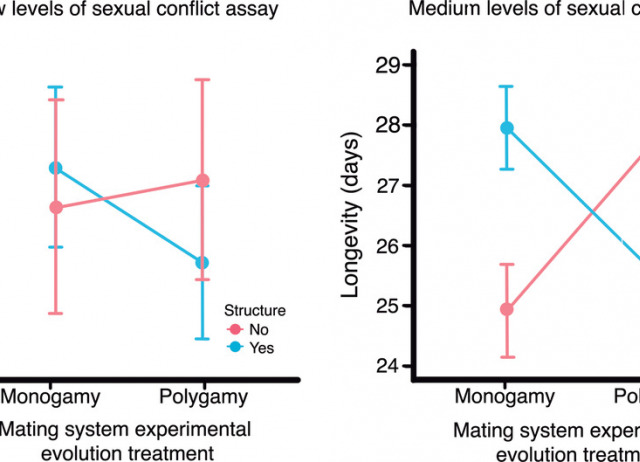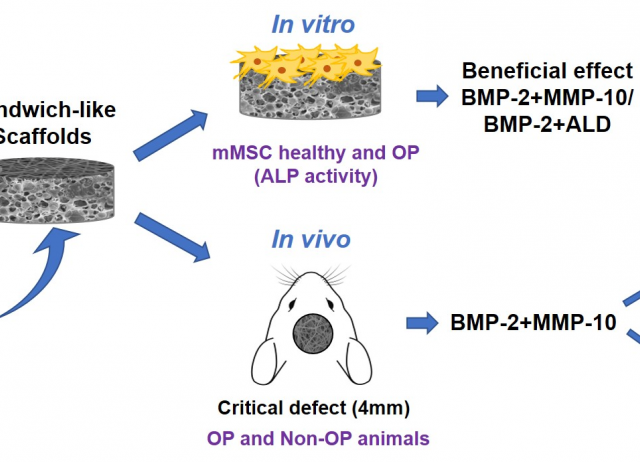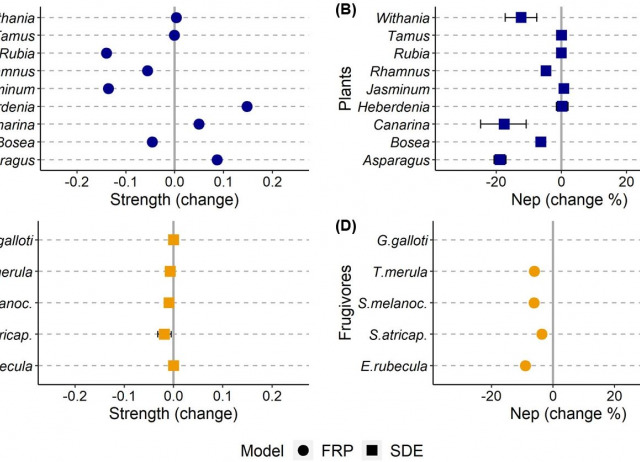Bulk and compound-specific δ13C and n-alkane indices in a palustrine intermontane record for assessing environmental changes over the past 320 ka: the Padul Basin (Southwestern Mediterranean realm)
Here we provide valuable information about the palaeoenvironmental evolution of Southwestern Mediterranean region during the last ca. 320 ka through a biomarker-based study of the longest continuous continental Quaternary record in the Iberian Peninsula. The n-alkane content and δ13C values of these lipids were measured in 300 samples taken from the uppermost 55 m of the Padul Basin (PB) record. The δ13C signal of long-chain n-alkanes was a reliable proxy for C4/C3 terrestrial vegetation composition in the basin, as emergent macrophytes made a minor contribution to these homologues. In contrast, the δ13C values of C23 and C25 alkanes reflected mainly phases of increasing water level of the lacustrine/palustrine water body since aquatic macrophytes contain a large proportion of these compounds. Low δ13C values were attributed to a marked contribution of plants using the C3 photosynthetic pathway. Intervals with the lowest δ13C values were attributed to an important input of angiosperms, although they could also be explained by changing environmental conditions or environmental stress, as large shifts in δ13C occurred in long-chain homologues typically abundant in terrestrial plants. Shifts in δ13C of medium-chain homologues reflected limited CO2 availability induced by water temperature, salinity, pH, enhanced productivity, low atmospheric pCO2, or stagnant barriers, rather than the abundance of aquatic macrophytes. Our results also suggest enhanced isotopic fractionation during lipid synthesis by aquatic macrophytes within MIS 7 and the Holocene, leading to increased δ13C values of bulk OM and of long-chain n-alkanes. Hence, the δ13C logs were ideal for studying the contribution of aquatic macrophytes to the lipid and isotopic composition of sediments and for the reconstruction of palaeoenvironmental conditions. These results confirmed that C4 plants had a low presence in the PB. Comparison with biomarker analysis and pollen data of the PB and other records of the Southwestern Mediterranean revealed that δ13C values of bulk OM and of long-chain n-alkanes reflected global climatic oscillations during MIS 7 and the episodes Heinrich Events 3, 2, 1 and Younger Dryas.
Ortiz, José E.; Torres, Trinidad; Delgado Huertas, Antonio; Valle, Maruja; Soler, Vicente; Araujo, Rafael; Rivas, María R.; Julià, Ramón; Sánchez-Palencia, Yolanda; Vega-Panizo, Rogelio
Could climate change benefit invasive snakes? Modelling the potential distribution of the California Kingsnake in the Canary Islands
The interaction between climate change and biological invasions is a global conservation challenge with major consequences for invasive species management. However, our understanding of this interaction has substantial knowledge gaps; this is particularly relevant for invasive snakes on islands because they can be a serious threat to island ecosystems. Here we evaluated the potential influence of climate change on the distribution of invasive snakes on islands, using the invasion of the California kingsnake (Lampropeltis californiae) in Gran Canaria. We analysed the potential distribution of L. californiae under current and future climatic conditions in the Canary Islands, with the underlying hypothesis that the archipelago might be suitable for the species under these climate scenarios. Our results indicate that the Canary Islands are currently highly suitable for the invasive snake, with increased suitability under the climate change scenarios tested here. This study supports the idea that invasive reptiles represent a substantial threat to near-tropical regions, and builds on previous studies suggesting that the menace of invasive reptiles may persist or even be exacerbated by climate change. We suggest future research should continue to fill the knowledge gap regarding invasive reptiles, in particular snakes, to clarify their potential future impacts on global biodiversity.
Piquet, Julien C. ; Warren, Dan L.; Saavedra Bolaños, Jorge Fernando; Sánchez Rivero, José Miguel; Gallo-Barneto, Ramón; Cabrera-Pérez, Miguel Ángel; Fisher, Robert N.; Fisher, Sam R.; Rochester, Carlton J.; Hinds, Brian; Nogales, Manuel ; López-Darias, Marta
K-Ar geochronology and trace-element geochemistry of 2M1 illite from upper Paleozoic shale of SW Laurentia – Insights into sediment origin and drainage pathways in the Anadarko Basin, USA
The Anadarko Basin of Oklahoma represents a major Paleozoic depocenter that existed along the rifted margins of southwestern Laurentia. In its infancy it accumulated a thick series of Cambrian through Mississippian detritus while further subsidence caused by inversion of the Cambrian Southern Oklahoma Aulacogen resulted in voluminous Pennsylvanian to Permian sediment. This contribution reports new data on K-Ar ages and trace-element geochemistry of detrital illite from middle and upper Pennsylvanian shale used to reconstruct sediment origins at the peak period of subsidence of the Anadarko Basin. X-ray diffraction was used to unveil mineral compositions and abundances of illite polytypes in two size fractions of separated illite (˂1 and 2-1 μm). K-Ar isotopic analyses were completed for both fine fractions, while the laser ablation inductively coupled plasma mass spectrometry was done for the latter. All illite separates consisted of mixtures of authigenic (1Md) and detrital (2M1) illite. The Illite Age Analyses showed that the detrital age of Desmoinesian (Moscovian) shale is the late Ediacaran (584 Ma), while the age of Missourian (Kasimovian) shale is the middle Cambrian (512.5 Ma). Trace-element abundances of all analyzed illite, irrespectively of stratigraphic age, are consistent with those of mica from metamorphic rocks. Based on illite detrital age and geochemistry it was inferred that Desmoinesian (Moscovian) shale represents a mixture of Neoproterozoic and Cambrian detritus sourced locally, whereas Missourian (Kasimovian) shale records a provenance shift toward more distal easterly sources from the Ouachita-(Marathon) foreland. This study has proposed a sediment source transition between the middle and upper Pennsylvanian that likely reflected major changes in the basin paleogeography and progressive development of the east-west (transcontinental) fluvial systems.
Šegvić, Branimir; Zanoni, Giovanni; Bozkaya, Ömer; Sweet, Dustin; Barnes, Melanie; Boulesteix, Thomas ; Solé, Jesús
Squamins C–F, four cyclopeptides from the seeds of Annona globiflora
Four cyclic octapeptides, squamins C–F, were isolated from the seeds of Annona globiflora Schltdl. These compounds share part of their amino acid sequence, -Pro-Met(O)-Tyr-Gly-Thr-, with previously reported squamins A and B. Their structures were determined using NMR spectroscopic techniques together with quantum mechanical calculations (QM-NMR), ESI-HRMS data and a modified version of Marfey's chromatographic method. All compounds showed cytotoxic activity against DU-145 (human prostate cancer) and HeLa (human cervical carcinoma) cell lines. Clearly, A. globiflora is an important source of bioactive molecules, which could promote the sustainable exploitation of this undervalued specie.
Sosa-Rueda, Javier; Domínguez-Meléndez, Vanihamin; Ortiz-Celiseo, Araceli; López-Fentanes, Fernando C.; Cuadrado, Cristina; Fernández, José J.; Hernández Daranas, Antonio; Cen-Pacheco, Francisco
Theoretical Three-Dimensional Zinc Complexes with Glutathione, Amino Acids and Flavonoids
Zinc plays an important role in the regulation of many cellular functions; it is a signaling molecule involved in the transduction of several cascades in response to intra and extracellular stimuli. Labile zinc is a small fraction of total intracellular zinc, that is loosely bound to proteins and is easily interchangeable. At the cellular level, several molecules can bind labile zinc and promote its passage across lipophilic membranes. Such molecules are known as ionophores. Several of these compounds are known in the scientific literature, but most of them can be harmful to human health and are therefore not allowed for medical use. We here performed a theoretical three-dimensional study of known zinc ionophores, together with a computational energetic study and propose that some dietary flavonoids, glutathione and amino acids could form zinc complexes and facilitate the transport of zinc, with the possible biological implications and potential health benefits of these natural compounds. The study is based on obtaining a molecular conformational structure of the zinc complexes with the lowest possible energy content. The discovery of novel substances that act as zinc ionophores is an attractive research topic that offers exciting opportunities in medicinal chemistry. We propose that these novel complexes could be promising candidates for drug design to provide new solutions for conditions and diseases related to zinc deficiency or impairment derived from the dysregulation of this important metal.
Pérez de Lastra, José Manuel; Andrés-Juan, Celia; Plou Gasca, Francisco José; Pérez-Lebeña, Eduardo.
Cyanovinylation of Aldehydes: Organocatalytic Multicomponent Synthesis of Conjugated Cyanomethyl Vinyl Ethers
A novel organocatalytic multicomponent cyanovinylation of aldehydes was designed for the synthesis of conjugated cyanomethyl vinyl ethers. The reaction was implemented for the synthesis of a 3-substituted 3-(cyanomethoxy)acrylates, using aldehydes as substrates, acetone cyanohydrin as the cyanide anion source, and methyl propiolate as the source of the vinyl component. The multicomponent reaction is catalyzed by N-methyl morpholine (2.5 mol%) to deliver the 3-(cyanomethoxy)acrylates in excellent yields and with preponderance of the E-isomer. The multicomponent reaction manifold is highly tolerant to the structure and composition of the aldehyde (aliphatic, aromatic, heteroaromatics), and it is instrumentally simple (one batch, open atmospheres), economic (2.5 mol% catalyst, stoichiometric reagents), environmentally friendly (no toxic waste), and sustainable (easy scalability).
Delgado-Hernández, Samuel; García-Tellado, Fernando; Tejedor, David
Metapopulation structure modulates sexual antagonism
Despite the far-reaching evolutionary implications of sexual conflict, the effects of metapopulation structure, when populations are subdivided into several demes connected to some degree by migration, on sexual conflict dynamics are unknown. Here, we used experimental evolution in an insect model system, the seed beetle Callosobruchus maculatus, to assess the independent and interacting effects of selection histories associated with mating system (monogamy vs. polygamy) and population subdivision on sexual conflict evolution. We confirm traditional predictions from sexual conflict theory by revealing increased resistance to male harm in females from populations with a history of intense sexual selection (polygamous populations) compared to females from populations with a history of relaxed sexual selection (monogamous populations). However, selection arising from metapopulation structure reversed the classic pattern of sexually antagonistic coevolution and led to reduced resistance in females from polygamous populations. These results underscore that population spatial structure moderates sexual selection and sexual conflict, and more broadly, that the evolution of sexual conflict is contingent on ecological context. The findings also have implications for population dynamics, conservation biology, and biological control.
Rodríguez-Expósito, Eduardo; García-González, Francisco
The Bone Regeneration Capacity of BMP-2 + MMP-10 Loaded Scaffolds Depends on the Tissue Status
Biomaterials-mediated bone formation in osteoporosis (OP) is challenging as it requires tissue growth promotion and adequate mineralization. Based on our previous findings, the development of scaffolds combining bone morphogenetic protein 2 (BMP-2) and matrix metalloproteinase 10 (MMP-10) shows promise for OP management. To test our hypothesis, scaffolds containing BMP-2 + MMP-10 at variable ratios or BMP-2 + Alendronate (ALD) were prepared. Systems were characterized and tested in vitro on healthy and OP mesenchymal stem cells and in vivo bone formation was studied on healthy and OP animals. Therapeutic molecules were efficiently encapsulated into PLGA microspheres and embedded into chitosan foams. The use of PLGA (poly(lactic-co-glycolic acid)) microspheres as therapeutic molecule reservoirs allowed them to achieve an in vitro and in vivo controlled release. A beneficial effect on the alkaline phosphatase activity of non-OP cells was observed for both combinations when compared with BMP-2 alone. This effect was not detected on OP cells where all treatments promoted a similar increase in ALP activity compared with control. The in vivo results indicated a positive effect of the BMP-2 + MMP-10 combination at both of the doses tested on tissue repair for OP mice while it had the opposite effect on non-OP animals. This fact can be explained by the scaffold’s slow-release rate and degradation that could be beneficial for delayed bone regeneration conditions but had the reverse effect on healthy animals. Therefore, the development of adequate scaffolds for bone regeneration requires consideration of the tissue catabolic/anabolic balance to obtain biomaterials with degradation/release behaviors suited for the existing tissue status.
García-García, Patricia; Reyes, Ricardo; Rodríguez, José Antonio; Martín, Tomás; Evora, Carmen; Díaz-Rodríguez, Patricia; Delgado, Araceli
Changes in the structure of seed dispersal networks when including interaction outcomes from both plant and animal perspectives
Interaction frequency is the most common currency in quantitative ecological networks, although interaction quality can also affect benefits provided by mutualisms. Here, we evaluate if interaction quality can modify network topology, species' role and whether such changes affect community vulnerability to species loss. We use a well-examined study system (bird–lizard and fleshy-fruited plants in the ‘thermophilous' woodland of the Canary Islands) to compare network and species-level metrics from a network based on fruit consumption rates (interaction frequency, IF), against networks reflecting functional outcomes: a seed dispersal effectiveness network (SDE) quantifying recruitment, and a fruit resource provisioning network (FRP), accounting for the nutrient supply of fruits. Nestedness decreased in the FRP and the SDE networks, due to the lack of association between fruit consumption rates and 1) nutrient content and; 2) recruitment at the seed deposition sites, respectively. The FRP network showed lower niche overlap due to resource use complementarity among frugivores. Interaction evenness was lower in the SDE network, in response to a higher dominance of lizards in the recruitment of heliophilous species. Such changes, however, did not result in enhanced vulnerability against extinctions. At the plant species level, strength changed in the FRP network in frequently consumed or highly nutritious species. The number of effective partners decreased for species whose seeds were deposited in unsuitable places for recruitment. In frugivores, strength was consistent across networks (SDE vs IF), showing that consumption rates outweighed differences in dispersal quality. In the case of lizards, the increased importance of nutrient-rich species resulted in a higher number of effective partners.
Our work shows that although frequency strongly impacts interaction effects, accounting for quality improves our inferences about interaction assembly and species role. Thus, future studies including interaction outcomes from both partners' perspectives will provide valuable insights about the net effects of mutualistic interactions.
González-Castro, Aaron; Morán-López, Teresa; Nogales, Manuel; Traveset, Anna
Acrylonitrile Derivatives against Trypanosoma cruzi: In Vitro Activity and Programmed Cell Death Study
The neglected infection known as Chagas disease, caused by the protozoan parasite Trypanosoma cruzi, results in more than 7000 deaths per year, with an increasing number of cases in non-endemic areas such as Europe or the United States. Moreover, with the current available therapy, only two compounds which are active against the acute phase of the disease are readily available. In addition, these therapeutic agents display multiple undesired side effects such as high toxicity, they are expensive, the treatment is lengthy and the resistant strain has emerged. Therefore, there is a need to find new compounds against Chagas disease which should be active against the parasite but also cause low toxicity to the patients. In the present work, the activity of novel acrylonitriles against Trypanosoma cruzi was evaluated as well as the analysis of the physiological events induced in the treated parasites related to the cell death process. Hence, the characteristic features of an apoptosis-like process such as chromatin condensation and mitochondrial membrane potential, among others, were studied. From the 32 compounds tested against the epimastigote stage of T. cruzi, 11 were selected based on their selectivity index to determine if these compounds were able to induce programmed cell death (PCD) in the treated parasites. Furthermore, acrylonitriles Q5, Q7, Q19, Q27 and Q29 were shown to trigger physiological events related in the PCD. Therefore, this study highlights the therapeutic potential of acrylonitriles as novel trypanocidal agents.
Bethencourt-Estrella, Carlos J.; Delgado-Hernández, Samuel; López-Arencibia, Atteneri; San Nicolás-Hernández, Desirée; Sifaoui, Ines; Tejedor, David; García-Tellado, Fernando; Lorenzo-Morales, Jacob; Piñero, José E.
